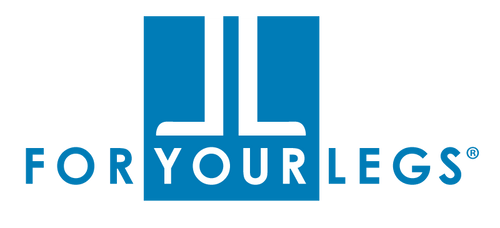An Introductory Guide to Chronic Venous Insufficiency
Chronic venous insufficiency (CVI) is somewhat of an umbrella term referring to a variety of venous circulation problems that cause a back-up of blood in the legs. CVI generally doesn’t pose a serious health threat, but it’s a chronic condition that can become progressive and potentially disabling if left untreated, resulting in painful swelling and leg ulcers.
With over 40% of the population affected, chronic venous insufficiency is one of the most common vascular conditions in the United States, especially in women and people over the age of fifty. It’s incredibly important, then, to know the signs in order to address any symptoms and prevent CVI from developing.
Causes and Risks
Within our veins are flap-like structures called valves, which open and close according to blood pressure and the pumping movement from surrounding muscles. When working properly, these valves ensure that blood flows in one direction—towards the heart—while also preventing any backflow.
Things don’t always work so smoothly, however, and circulation can become compromised. When valves are damaged or experience malfunction, blood flows backward and pools in the veins of the legs in a type of CVI called venous reflux.
Chronic venous insufficiency is also caused by blood clots that form after trauma or injury to the vein occurs. When clots form inside a deep vein, they leave behind obstructive scarring and damage to the valves; this is referred to as post-thrombotic syndrome.
There are, of course, certain lifestyle or health factors that can increase the risk of developing CVI or aggravate the condition if you already have it. These risk factors include:
- Obesity
- Smoking
- Pregnancy
- Physical inactivity
- High blood pressure
- Standing or sitting for prolonged periods
- Wearing restrictive clothing, such as tight girdles or belts
- Medical history of blood clots, deep vein thrombosis, or phlebitis
Symptoms
Chronic venous insufficiency manifests through a variety of symptoms, most of which are mild and not inherently limb-threatening. They can, however, be incredibly uncomfortable and disruptive to daily life.
Here are a few things to watch out for:
- Swelling in legs or ankles
- Tightness in calves
- Itching or tingling
- Heaviness, cramping, or dull aching in legs, especially after walking
- Pain that worsens when standing
- Varicose or spider veins
- Ulcers on legs and ankles
- Hyperpigmentation or redness around legs and ankles
- Thickening of skin around legs and ankles
- Wounds and cuts that are slow to heal on legs or ankles
Diagnosis
If a patient is at risk for chronic venous insufficiency and is exhibiting symptoms, scheduling an appointment with their doctor to issue a professional diagnosis of CVI is the next step in getting treatment and relief.
First, the doctor will perform a physical exam and take a thorough medical history of the patient. Before diagnosing CVI and discussing treatment options, the doctor may prescribe some additional tests—just to be sure!
One of these tests is a duplex ultrasound, which uses two modes of ultrasound to test blood flow and venous structure: Doppler, which evaluates the velocity and direction of blood flow in a vessel; and B-mode, which transmits an image of the vein to the doctor. Another diagnostic test is the venogram, where a contrast dye is injected into the veins and an X-ray of the blood vessels is taken. This image allows the doctor to better detect any problems with the valves.
These diagnostic tools help doctors get a more accurate idea of the extent of the disease and its possible course, thus allowing them to prescribe the treatment that would be most effective for their particular patient.
Treatment
Chronic venous insufficiency is a treatable condition with the main goal being to reduce discomfort by alleviating symptoms through improved blood flow. Since this is a chronic condition, it’s incredibly important for patients to continually monitor and manage their symptoms to prevent recurrence; oftentimes it may take a combination of a few different treatments to find relief.
Conservative treatments include:
- Wearing compression garments to decrease leg swelling
- Elevating the legs to reduce pressure in the veins
- Regular exercise to increase circulation
- Weight loss if patient is overweight
- Medications used in conjunction with compression therapy
- Therapeutic massage of lower legs to drain fluid buildup
If symptoms still persist, there are minimally invasive out-patient procedures available to clear venous passages and repair vessels. In more severe cases, surgery may be recommended.
These options include:
- Ablation: using a tiny electrode, heat is used to create scar tissue in order to close off and destroy the affected vein, which is then reabsorbed by the body over time.
- Angioplasty: a small medical balloon is inserted into the affected vein, pressing against the inside wall of the vein to wider the blockage and improve blood flow; a tiny metal mesh tube called a stent is then placed inside the vein to prevent it from narrowing again.
- Bypass: a new length of artificial vein is connected to two areas of the affected vein, allowing blood to be rerouted around the blockage.
- Ligation: a procedure that involves tying off an affected vein, preventing blood from flowing through it.
- Sclerotherapy: a caustic solution is injected into the affected vein, causing it to fill with scar tissue; the body eventually reabsorbs the nonfunctional vein.
- Subfascial endoscopic perforator surgery: a minimally invasive procedure in which perforator veins found in the calf are clipped and tied off, allowing blood to drain into healthy veins.
- Surgical repair: the affected vein and/or valves are surgically repaired through an open incision or by using a catheter.
- Vein stripping: the affected vein is removed through small surgical incisions made in the leg.
- Vein transplant: a healthy vein from another part of the body is transplanted to replace the affected vein.
Prevention
Whether you’ve never had chronic venous insufficiency or you’ve undergone treatment and want to lower the risk of recurrence, it’s always a good idea to practice self-care and healthy habits! Seemingly small lifestyle changes can lead to big health benefits and improve your overall quality of life.
There are several things you can do to lower your risk of CVI:
- Maintaining healthy weight
- Exercising regularly
- Maintaining good skin care
- Avoiding sitting or standing for prolonged periods
- Uncrossing legs while sitting
- Wearing non-restrictive clothing
Chronic venous insufficiency is a treatable and manageable condition, but remember: even with successful treatment, recurrence can still happen. It’s essential for patients to stay consistent with their treatment and maintain communication with their healthcare providers should symptoms arise again!
SOURCES
“All About Chronic Venous Insufficiency (CVI).” Conditions. Vein Directory. Web. Retrieved from http://www.veindirectory.org/article/conditions/chronic-venous-insufficiency-cvi
Burnard, Kevin G., and Wadoodi, Ashar. “Chapter 11: Physiology of Venous Insufficiency.” Vein Handbook. American Venous Forum. Web. Retrieved from http://www.veinforum.org/patients/vein-handbook/chapter-11-physiology-of-venous-insufficiency.html
“Chronic Venous Insufficiency.” Health Library. Johns Hopkins Medicine. Web. Retrieved from http://www.hopkinsmedicine.org/healthlibrary/conditions/cardiovascular_diseases/chronic_venous_insufficiency_85,P08250/
“Chronic Venous Insufficiency.” Health Library. Mount Sinai Hospital. Web. Retrieved from http://www.mountsinai.org/patient-care/health-library/diseases-and-conditions/chronic-venous-insufficiency
Henke, Peter K. “Chronic Venous Insufficiency.” Vascular Conditions. Society for Vascular Surgery. Web. Retrieved from https://vascular.org/patient-resources/vascular-conditions/chronic-venous-insufficiency
“Venous Insufficiency.” Health Guide. The New York Times. Web. Retrieved from http://www.nytimes.com/health/guides/disease/venous-insufficiency/overview.html
“What is Chronic Venous Insufficiency?” Conditions. Vein Directory. Web. Retrieved from http://www.veindirectory.org/article/conditions/what-is-chronic-venous-insufficiency



Leave a comment